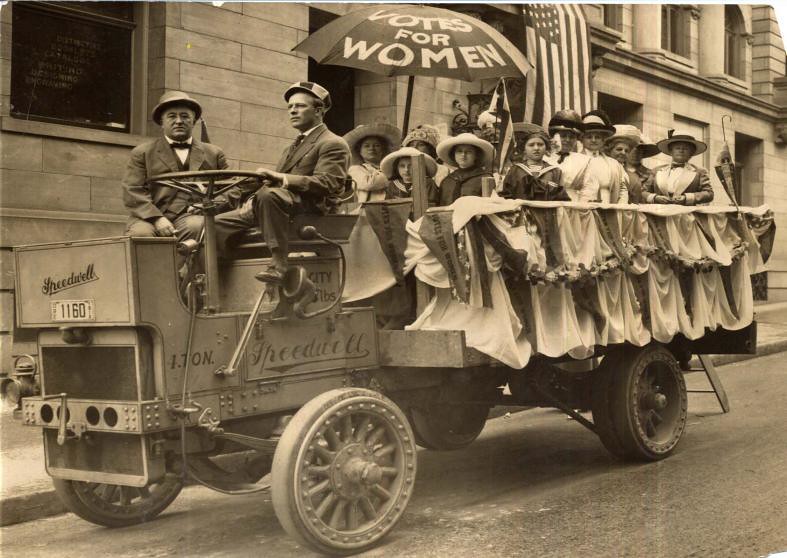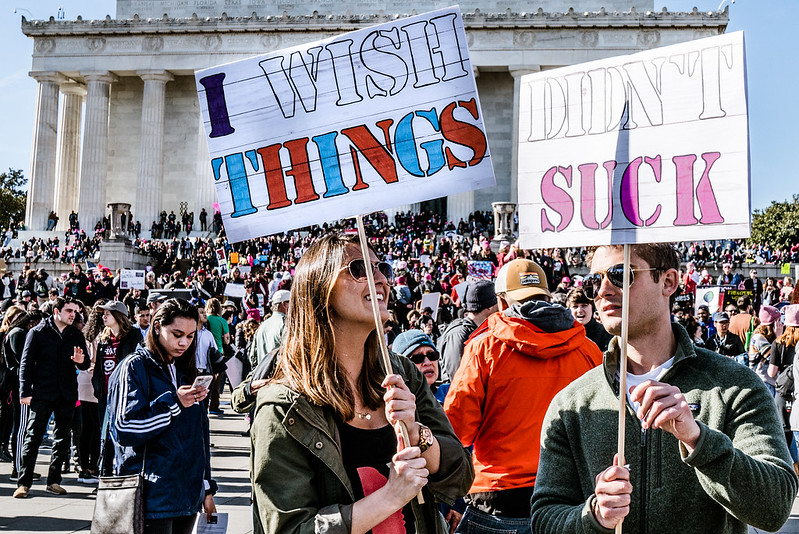
On the 100th anniversary of the 19th Amendment, we must recognize: We have a long way to go to achieving women’s equality.
This post originally appeared in the Daily Hampshire Gazette.
On Aug. 26, 1920, U.S. Secretary of State Bainbridge Colby officially certified the ratification of the 19th Amendment, which eliminated sex-based barriers to voting. The amendment opened the door for some women to vote, but race-based obstacles kept many women from casting ballots.
Native American women didn’t gain U.S. citizenship until the Snyder Act of 1924, then had to fight for the vote state by state. Federal policy barred immigrants of Asian descent from U.S. citizenship and voting until 1952. Poll taxes, literacy tests and violence blocked many African American women from voting until Congress passed the Voting Rights Act in 1965—gutted by the Supreme Court in 2013 in Shelby County v. Holder.
While not all women could vote after its passage, the 19th Amendment did increase women’s political influence. The nonpartisan League of Women Voters formed in 1920 to educate and encourage women to participate in the political process (although initially excluding Black women). The same year, 14 women’s rights organizations joined together and formed the powerful Women’s Joint Congressional Committee to lobby for federal-level social welfare legislation.
Due largely to these efforts, Congress passed the Sheppard-Towner Act of 1921, which provided federal funding for maternity and child care. This act was the first time the federal government passed social security legislation, which set the stage for Franklin D. Roosevelt’s New Deal.
Women also successfully lobbied to establish a mother’s pension program for poor women with children as well as educational and industrial reforms, including child labor laws.
Despite these impacts, women did not vote all that much differently than men—initially. Gender gaps in voting frequency, party affiliation and attitudes on issues first emerged in the early 1980s, when the country took a neoliberal turn with the election of Ronald Reagan. These gender gaps have grown steadily since then.
Women are now the majority of voters, casting close to 10 million more votes than men in the 2016 elections. That year, 73.7 million women voted, whereas only 63.8 million men voted, reports the Center for American Progress.
Women vote at higher rates than men: 63 percent of women who were eligible to vote cast their ballots in the 2016 election, whereas 59 percent of men did, reports the Pew Research Center. Differential gendered voting rates persist across racial groups.
Pew also reports a growing gender gap in partisan affiliation and presidential voting. In 2018 and 2019, 56 percent of female registered voters identified as Democratic or leaned toward the Democratic party, while only 38 percent identified as Republicans or leaned toward the GOP.
For men, those numbers were 42 percent Democratic and 50 percent Republican.

Since first emerging in the 1980s, the gender gap in presidential voting has ranged from 4 percent in 1992 to a high of 11 percent in 2016—that year, 52 percent of men voted for Trump, whereas only 41 percent of women did; 54 percent of women voted for Clinton and only 41 percent of men supported her.
Black and Latina women’s strong identification with the Democratic Party fuels the gender gaps in party identification and presidential vote choice, argues political scientist Wendy Smooth of Ohio State University. Younger, unmarried and low-income women are also significantly more likely to vote Democratic.
The gender gap is particularly evident in attitudes toward certain public policy issues. For example, women are more likely than men to prefer an active role for government in providing a social safety net for those in need, including food assistance, health insurance and welfare. Women are also more likely than men to support regulations to protect the environment and laws that protect gay men and lesbians from discrimination. On the other hand, women are less likely than men to support military interventions and gun rights.
Despite the fact that women are over 53 percent of voters, they are just 23.7 percent of Congress, 29.2 percent of state legislators, and 28.9 percent of statewide executive officeholders, according to the Center for American Women and Politics at Rutgers University.
While in 2018, women ran for public office and won in record numbers, the U.S. lags behind 82 other countries across the world in women’s political representation in national legislatures. U.S. women still face high barriers to winning public office, including fundraising, discrimination, stereotyping and harassment.
Shortly after winning suffrage, women’s rights activists drafted the Equal Rights Amendment to guarantee broad equality for women. Close to 100 years later, we still don’t have the ERA. The U.S. is one of just a handful of countries in the entire world without an equal rights provision in our Constitution—despite the fact that Congress and three-quarters of states have now approved the ERA. Why? Because the Trump administration is blocking certification of the amendment.
On the 100th anniversary of the 19th Amendment, we should celebrate that one’s sex is no longer a barrier to voting, but we should also recognize that we have a long way to go to achieving women’s equality.





